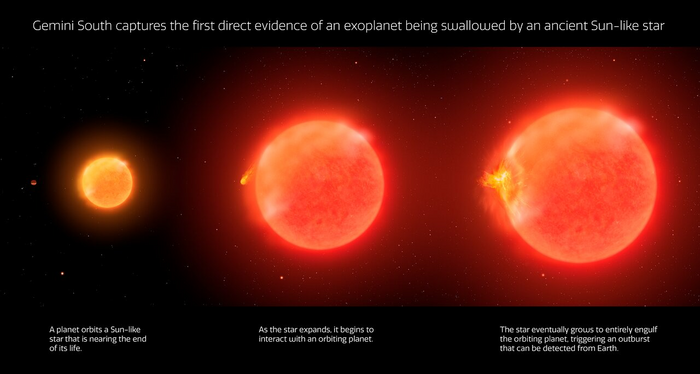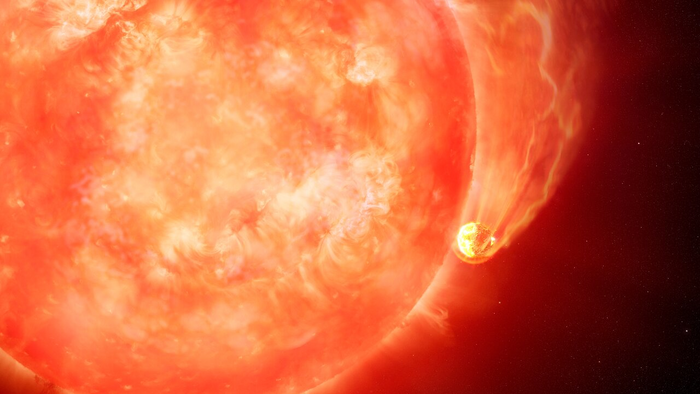Astronomers have long studied the life cycle of stars and how they interact with their surrounding planetary systems as they age. When a Sun-like star nears the end of its life, it expands anywhere from 100 to 1000 times its original size, eventually engulfing the system’s inner planets. While such events are estimated to occur only a few times each year across the entire Milky Way, astronomers have never before caught one in the act. Now, with the power of the Gemini South Adaptive Optics Imager (GSAOI) on Gemini South, astronomers have observed the first direct evidence of a dying star expanding to engulf one of its planets.
Evidence for this event was found in a telltale “long and low-energy” outburst from a star about 13,000 light-years from Earth, in the Milky Way. This event, the devouring of a planet by an engorged star, likely presages the ultimate fate of Mercury, Venus, and Earth when our Sun begins its death throes in about five billion years.

The first hints of this event were uncovered by optical images from the Zwicky Transient Facility. Archival infrared coverage from NASA’s Near-Earth Object Wide-field Infrared Survey Explorer (NEOWISE) then confirmed the engulfment event. Gemini South provided essential data thanks to its adaptive-optics capabilities. The outburst from the engulfment lasted approximately 100 days and the characteristics of its light curve, as well as the ejected material, gave astronomers insight into the mass of the star and that of its engulfed planet. The ejected material consisted of about 33 Earth masses of hydrogen and about 0.33 Earth masses of dust.
Now that the signatures of a planetary engulfment have been identified for the first time, astronomers have improved metrics they can use to search for similar events happening elsewhere in the cosmos. This will be especially important when Vera C. Rubin Observatory comes online in 2025. For instance, the observed effects of chemical pollution on the remnant star when seen elsewhere can hint that an engulfment has taken place. The interpretation of this event also provides evidence for a missing link in our understanding of the evolution and final fates of planetary systems, including our own.











